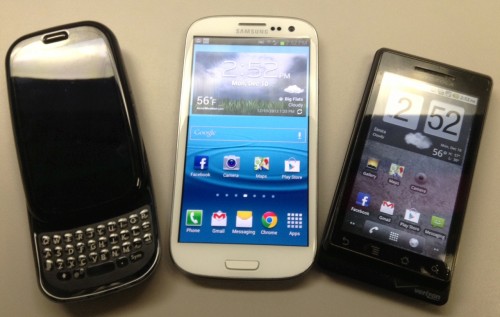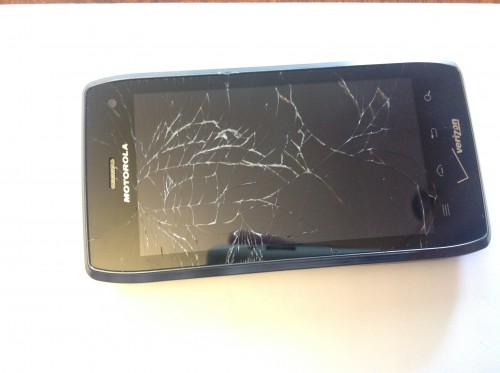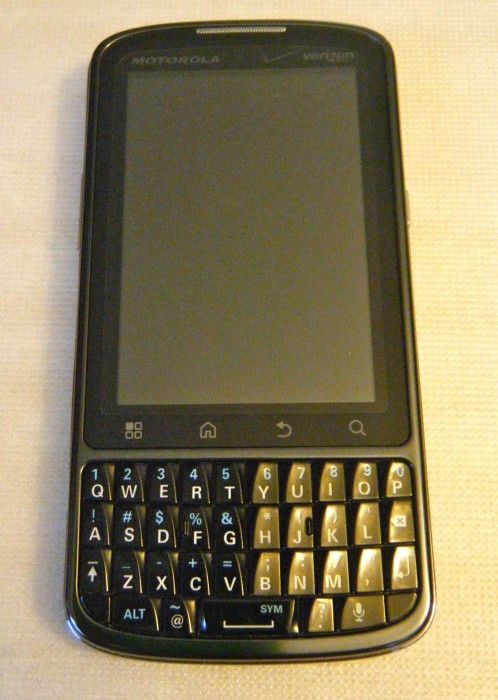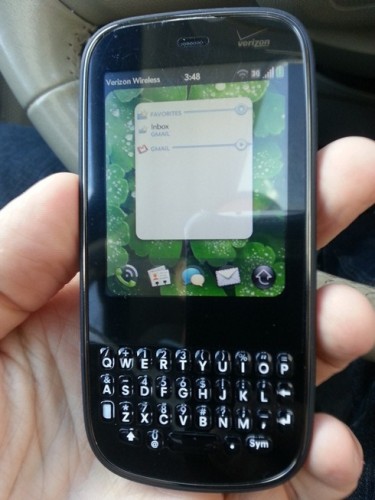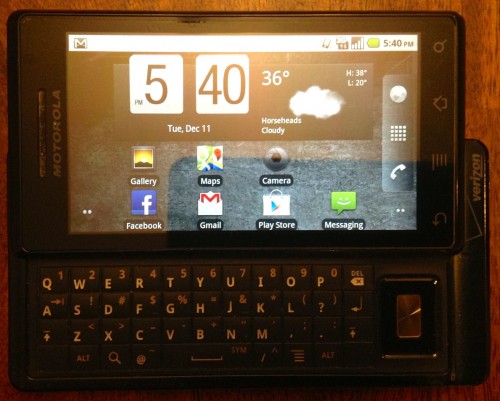Early this year I got the Motorola Droid 4 for Verizon (on release day no less), and I joined the 4G/LTE revolution. At first it was underwhelming since the 4G coverage in our area was ‘spotty’ at best, and non-existent for the most part. But within a couple of months, Verizon had added a new 4G zone to our area and expanded coverage in the existing zone. It was awesome!
So for the next few months I enjoyed fast data speeds — and the zippy performance — of the Droid 4. It was apparent that the phone itself thrived on the 4G data — as if even mundane things like starting non-data centric apps were somehow connected to the data transfer rate.
Then in late August I got to travel to Park City, Utah to look at the Hyundai Santa Fe, and naturally — while at 8500 ft elevation at the gorgeous Montage ski resort — I couldn’t resist going for a couple of trail runs on the side of the mountain! I mean, look at the view:
But I managed to take a couple of spills during the run and banged up the Droid 4 a bit, but it survived. Or so it seemed, because the next weekend we were school shopping for the kids, and I dropped the Droid 4 as I was taking it from my pants pocket. It fell onto a soft carpeted floor … and it shattered! That is what we call ‘residual stress’. Take a look:
I was greatly disappointed, but there was no way I could keep using it; I needed to go back to an earlier phone. I had sold off anything from 2011 prior to buying the Droid 4, so my best choice was to go back to the Motorola Droid Pro.
I had just settled into using the Droid Pro again, when the folks at US Cellular sent me the Samsung Galaxy SIII, and I decided to make it my ‘daily driver’ to really test it out. My main complaints with the Galaxy S3 were the size and TouchWiz OS ‘skin’, but what I praised was the speed, power, screen quality and display resolution.
After using and reviewing the Galaxy S3 for a month (and then returning it to US Cellular), I was given a Galaxy Note II to review, and I took the same approach of making it my main phone and using it everywhere and for everything. But as I noted in my review, each day I used it I liked it less, and once I finished gathering data for review, I quickly sought to go back to something else.
The problem was that the Droid Pro had two things that made it difficult to use anymore: the small and low-resolution screen, and the keyboard had developed a nasty habit of either missing or double-registering letters.
So I pulled out my trusty Palm Pixi Plus and re-activated that! I loved the Palm WebOS, and the main reason I had left the Pixi behind before was because it didn’t support email from my work, a problem which had since been resolved.
Perhaps surprisingly, I didn’t have an issue with the screen size or resolution – webOS felt fairly well optimized for both. The core problems with webOS that I had discussed here have only been exacerbated in the 18 months since I wrote that review.
In particular, the performance has become terribly sluggish as services such as GMail and Facebook have advanced their interfaces, and webOS apps remain stuck in time. Facebook was so awful that I could easily wait five minutes for it just to load up the first screen – even with a full high-speed WiFi network connection!
So sadly, after less than a week, I went back to the Droid Pro — but only for a few hours.
When I got home I charged up a trusty old companion …
That’s right, I still have the original Motorola Droid, the first million-selling Android device … from 2009. I got it the weekend after it launched as my first smartphone, and I have been an Android user ever since. I moved back to it largely due to the keyboard and because of the screen issues with the Droid Pro.
I have been using the Droid for a few weeks now, and I have definitely found it to be more usable than either the Palm Pixi or the Droid Pro. But every time I need to go back to the desktop or change settings or many other tasks, I am reminded of just how far we have come in the last three years.
What are a few of the major things I am noticing?
– Speed – don’t get bogged down on megahertz or multi-cores; just be aware that the new processors in phones from Apple and Samsung in particular are screaming fast. So while I was splitting hairs over performance between the Galaxy S3 and Note II, it was just that. New top-end phones are SO much faster and more powerful than something from even 2011, but certainly 2010 and 2009 — there is simply no comparison.
– Data Efficiency – I’m not just talking about 3G vs. 4G here; even with 3G speeds you will see a huge difference refreshing Facebook or GMail even after they are running. And while some of it is undoubtedly processor related, the way data is handled has become much more efficient.
– Android OS Improvements – I have talked about the inefficiency of app handling in Froyo before and how much Gingerbread helped, and how far Android has come with ICS and now Jelly Bean. The bottom line is this: a 2010/11 Android OS is inadequate at handling newer apps and social media requirements — to the point that it slows you down.
Of course I realize that this is a total ‘first world problem’; I am suffering through using a 3G phone with a 600MHz processor. But my point is that while the laptop we bought my wife in 2008 is still a great performer and has no need for replacement, when she tried doing something on my phone the other day she found it insufferable!
It is very easy to look at the Galaxy S3 compared to the S2, or the iPhone 5 compared to the 4S and see only incremental improvements. And in a few years we really will get to the point where year-to-year changes are much smaller than today. But right now we are in an amazingly rapid state of development for mobile technology, and it is hard to understand how fast we are moving unless you try to step backwards.

